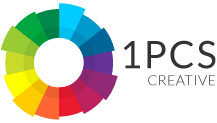
When it comes to Google Ads there is an effective and ineffective way to use your ad spend. It isn’t as simple as the highest bidder gets the best positions, and therefore the most clicks on their advert and leads.
Google Ads have to be relevant for multiple factors including keywords, adverts and landing page experience. Put another way, you will need to be consistently achieving a high Quality Score for your Google Ads to be achieving the best ad positions and highest quality leads.
This is so important to Google that they financially reward you for having a high quality score by reducing your cost per click cost. With a lower cost per click it allows for a higher return on ad spend (ROAS) with the ability to achieve more with your ad spend and/or reducing your max bid.
This blog post will look at what a Quality Score is, why it is important, how a high Quality Score for your Google Ads can improve your ROAS and tips to help improve your Quality Score.
Ben Webster
Creative director at 1PCS. Addicted to design, SEO, pizza and helping companies big and small succeed online.
Share This Article
Subscribe for updates
What is a Quality Score for Google Ads?
Firstly if you would like a recap on what Google Ads are and how they work, head over to our recent blog post.
Today we are specifically looking at Google Quality Score. Quality scores are given by Google based on how relevant your keywords are for the search intent and how good the user experience is anticipated to be.
Lets look a little deeper into what this means so that we can show fully the importance to help your return on ad spend and how the quality score formula works.
Ad relevance
This refers to how successful your Google ad match the relevant keywords with the search intent of the user. Ideally you would want an exact match.
Therefore it is important to create tailored ad copy so the keyword matches from the copy with the search made on Google. The more relevant the ad text, the higher Quality Score you would receive.
Expected click through rate
This element of the ad quality score is based on a prediction made by Google. The prediction is made by looking at the historical click through rate CTR. The higher your previous click through rate, the better this will be for your Quality Score.
The prediction also estimates how closely your ad matches that particular keyword and the search query, to know the expected CTR. Therefore a combination of using historical data and future predictions.
Landing page experience
Google not only gives a keyword Quality Score, it also takes into account if the user had a good experience on your landing page. For it to be a positive experience this would include functions such as being mobile friendly, quick load time, impactful copy and imagery.
The landing page Quality Score takes into account if the keywords are used on the page and if you have a high bounce rate, this will give you a low Quality Score.

Ensure your landing page is a positive experience for users on all devices
Calculating Quality Score
There are many factors when it comes to calculating your quality score, however the three areas above are the key performance indicator when developing ad campaigns. It helps to understand what determines a good quality score for Google Ads.
For each of the above: ad relevance, expected click through rate and landing page experience – your Google Ads will be given an ‘average’ rating. Which is simply scored as ‘below average’, ‘average’ and ‘above average’.
If you are currently running Google Ads and are scoring as ‘below average’ for any of the these, then it is likely you could make improvements to affect Quality Score to see a better return from your ad spend and achieve a higher ad position too.
The above is then converted into an exact Quality Score between 1 to 10. With 1 being the lowest Quality Score and 10 being the highest Quality Score. As a guide we would recommend aiming to be achieving a Quality Score of 7 and above.
If your Google Ads Quality Score is below 4 then there will be changes that can be made to improve Quality Score.
Ad Rank Formula
At the beginning of this blog post we spoke about it not being the case of purely the highest bidders wins the race! This is because the Quality Score is multiplied by the maximum cost per click bid cost. This combined calculation will give you your Ad Rank.
A higher Quality Score means it will help to give you a better Ad Rank. As the Ad Rank formula accounts for both the Quality Score and maximum bid cost, it is worth taking the time to ensure you have a high Quality Score.
The Ad Rank will determine where the Google Ad is positioned in the search results. Typically within search queries if an advert has a lower Quality Score than competitors targeting the same keyword, this will position lower.
This can make a huge impact on your return on ad spend because usually the higher the ad position, the higher the number of click throughs and therefore the higher the number of leads and conversions.
As Google Ads are paid for based on a pay per click model, it is important to Google that users are finding the ad relevant so that they want to click through and therefore ad spend is being used for the relevant search terms.

Understanding the Ad Rank Formula will help improve your ROAS
Factors that impact Quality Score
Google Quality Score affects what you will pay for each cost per click. Google financial reward advertisers with a high Quality Score because it means the ad uses relevant keywords and has a good user experience on the landing page.
Therefore aim to achieve a high Quality Score across all areas including: account level Quality Score, ad group Quality Score and Keyword level Quality Score. As it only looks at data in the last 90 days this will impact Quality Score if don’t continue to keep the Google Ads campaign relevant.
Along with the above, there are many other factors which can determine Quality Score. This includes factors such as the device the advert was seen on and even down to the time of day. These all play a part in the Quality Score formula.
Improve Quality Score
Depending on if any parts of your Google Ads account scored as ‘average’ or ‘below average’ for ad relevance, expected click through rate and landing page experience will help to identify the best areas to focus on to help improve your keyword’s Quality Score.
Firstly it is worth noting as Quality Score is Google’s go to in order to decide where your ad is positioned and the cost per click, we recommend investing the time to regularly test and optimise your Google Ads. This could include comparing broad match keywords to closely related keywords.
Or testing different ad copy such as the titles, headlines and body copy to improve ad relevance for the user’s search. Conduct keyword research for both your relevant landing page and ad groups to continuously improve the keyword Quality Scores.
As part of the optimisation your Google Ads Account may benefit from including negative keywords which are words specifically you wouldn’t want to be found for in a user’s search. This helps to ensure no ad spend is wasted, a further factor to improving your return on ad spend.

Test and optimise frequently to improve your Quality Score
Want to know more?
We hope you found our blog post useful to explain why your Quality Score for Google Ads is important, with low Quality Score keywords actually being penalised by Google. Google Ad Campaigns on average deliver 3-10x return on ad spend, so it is worth making sure they are set up and optimised correctly to achieve a high Quality Score.
As a Google Partner we have the right knowledge and expertise to help your business. If are already running Google Ads, we are happy to provide a review to see if they could be improved. Or if you are considering Google Ads for your digital marketing, feel free to get in touch with one of the team who would be happy to help you further.

